
All Solutions

Explore all the solutions you can create with Paperform: surveys, quizzes, tests, payment forms, scheduling forms, and a whole lot more.
See all solutions











Connect with over 2,000 popular apps and software to improve productivity and automate workflows
See all integrationsSolutions
All Solutions

Explore all the solutions you can create with Paperform: surveys, quizzes, tests, payment forms, scheduling forms, and a whole lot more.
See all solutionsIntegrations

Connect with over 2,000 popular apps and software to improve productivity and automate workflows
See all integrationsResources
How to Increase Social Media Engagement: A Guide for 2024

Improving social media engagement is at the top of the to-do list for most companies, marketers and influencers—after all, you can never have a big enough following.
But it’s not just about a shiny number. By boosting engagement you can increase brand awareness and ensure your business reaches as many potential new customers as possible.
If social media was easy we would all have millions of followers. Engagement is hard. It takes an investment of time, hard work and an understanding of what engagement truly means.
How can you improve your engagement as quickly and easily as possible? Well, let's just say there’s more to it than using the right hashtags and following a bunch of Facebook groups.
We’ve put together this guide to take your social media engagement to the next level. You'll find useful tips whether you're a rookie or a social media veteran— let’s get started.
What is social media engagement?
Social media engagement can be defined as the measurement of comments, likes, and shares that your content receives from users on a social media platform. It's not about having the biggest audience, it's about having an audience that's engaged with what you post.
What does this look like in practice? Here are some examples of what engagement looks like across different social networks:
- Likes on YouTube videos
- Comments on Instagram
- Shares on Facebook posts
- Re-pins on Pinterest
- Mentions/retweets on Twitter
- Click-throughs to articles you’ve shared
Think of an engagement as anything you would get a notification for on your phone. It could be a retweet, a follow a message, a comment, a DM, a friend request or just about any dopamine boosting interaction across socials.
Depending on what platform you’re using there are about a trillion ways potential customers can engage with your social media content. It’s your goal as a brand (or it should be) to maximize the number of engagements you’re getting online.
How to improve your social media engagement
Social media engagement is super important to focus on whether you’re a tiny freelancer or an ecommerce giant. Social media is the best tool you can harness to interact with your audience in real-time and build connections within your niche.
When people get to know your brand they’re more likely to convert—that may mean making a purchase, trying your services or signing up for your email newsletter. Social media empowers you to get closer to your customers and build brand loyalty.
So how do you work on increasing your engagement across social media accounts? Do you just post your own content and hope for the best? Well, there’s a bit more to it than that.
Analyze your engagement across social platforms
Before you can improve your engagement rate you need to know what it is. Right at the start of this post, we covered that it helps you figure out how much your audience is engaging with your posts—basically, how often people interact with the ‘stuff’ you post online.
Once you know your audience engagement level you can start improving it. There are a bunch of ways to calculate this across different social platforms, with plenty of online tools out there to help you out.
For example, if you’re trying to find your Instagram engagement rate, you can use Kicksta's free online engagement calculator. A quick web search will find similar tools for every social media platform from Twitter to LinkedIn.
Calculators like these make it easy to analyze your engagement: just input your username and the calculator does the rest of the work.
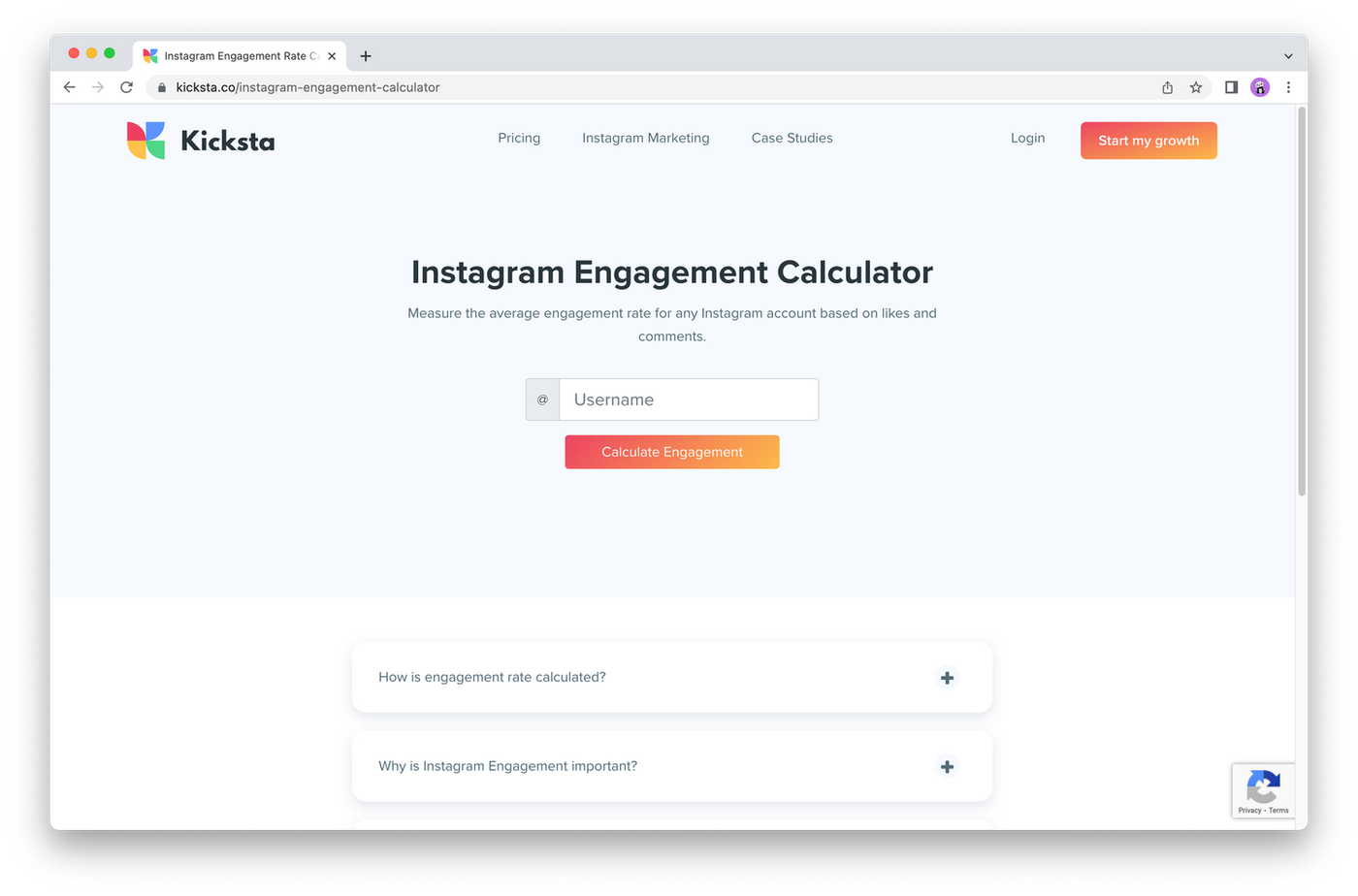 (Image Source: Kicksta)
(Image Source: Kicksta) You can also find your engagement rate via built-in tools on platforms like Twitter and Facebook. Pretty much every social media platform has a place for you to track your analytics—and if not, you can pick from a variety of third-party tools.
Create a new social media engagement strategy
If your engagement isn’t where you would like it to be, it’s time to come up with a new digital marketing strategy. As you define your strategy, it’s important to come up with specific goals and metrics you want to achieve.
The best goals are measurable, so come up with specific numbers. Your goal could range from aiming to gain a certain number of new followers each month to retweeting a certain amount of relevant content.
Just make sure you’re putting measurable steps in place. It’s not enough to say you want X amount of new followers. How are you going to get them? By interacting more? By following trending hashtags? By messaging back every user who tweets about your niche?
Keep in mind that your social media strategy goes hand in hand with your content marketing strategy. A great way to grow on social is by sharing relevant content your followers want to engage with. Check your analytics to see what content gets the highest levels of engagement with your target audience and double down on that.
Be more active
The easiest way to boost your engagement is by, well, engaging more on social platforms. Don’t just use it to post or run marketing campaigns—respond to comments, reply to DMs, follow brands in your niche, and ‘Like’ relevant posts and images.
Social media is a two-way street. People don’t like it when a brand or individual ignores them and uses it as a one-way communication channel. It just doesn’t work. People now expect brand accounts to respond to them on social media.
Engaging with customers on social media gives you an opportunity to turn them into promoters. One funny or helpful interaction can turn them into lifelong customers—which means every little interaction counts, no matter how deceptively harmless.
For example, JOJO’s Chocolate makes a point to always respond to the comments on its Instagram posts. If you scroll through JOJO’s feed, you’ll see that the company always answers comments, responding appropriately to complaints or simply dropping a heart eyes emoji when users rave about the brand’s chocolate.
This helps the brand feel more personal and accessible. And as JOJO’s Chocolate continues to strengthen customer relationships, this commitment to social media engagement will likely result in a more engaged, loyal customer base that promote their brand to others.
Cross-promote content across platforms
Cross-promote your content across different social platforms to increase your engagement everywhere. Promoting your content in as many different places as you can will help get as many eyes on your content as possible.
Cross-promoting is different from cross-posting, and it's definitely different from cross-selling. When you cross-post, you share the same social media post on multiple platforms. When you cross-promote, however, you’re putting in more effort to drive followers to your other social platforms.
A simple but effective way to cross-promote is to provide links to your other social media accounts so your followers can follow you everywhere you post.
For example, add a link to your Instagram in the description of your YouTube videos, or put your Pinterest profile URL in your Instagram bio.
There are even handy tools like linktree that allow you to create a kind of link hub for all your different accounts. People click a single link and are sent to a landing page with all your other links arranged nicely for them to view. We said link way too much, but hey, that's the way these things go.
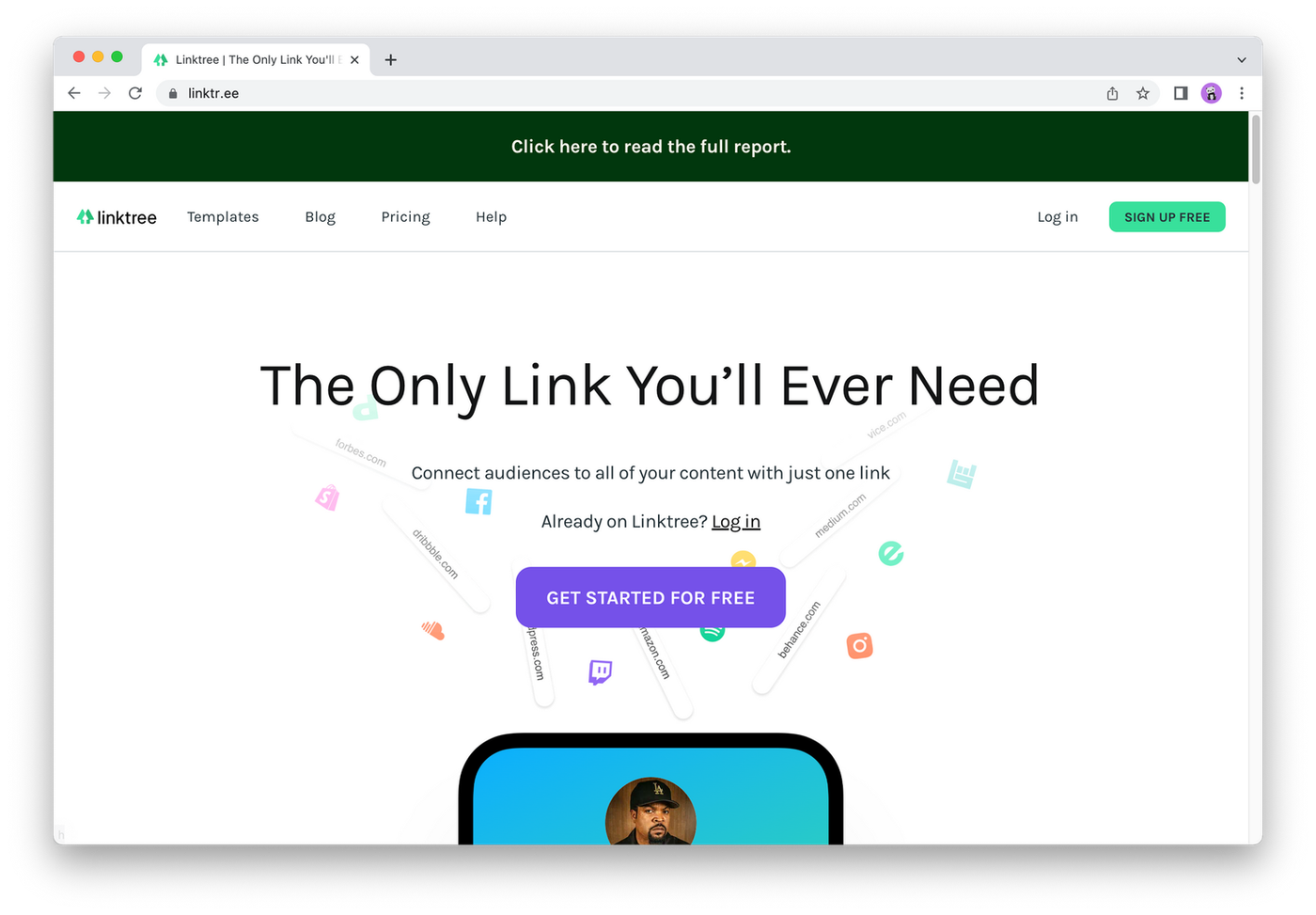 (Image Source: linktree)
(Image Source: linktree)You can also cross-promote new posts. Share your latest YouTube video on Facebook with a blurb about why people need to watch, or let your Twitter followers know that you’ll be doing an Instagram live video at a certain time.
This will help improve your engagement on all of your social platforms and, to use a marketing buzzword, adds a bit of synergy to your brand.
Remember to tailor your voice to different platforms. The way you post on Twitter shouldn’t be the same way you post on Facebook or Instagram. Keep your brand voice in line with the platform you're using to ensure maximum engagement.
Run giveaways and contests
Giveaways and contests are a great way to boost engagement. When you run a giveaway on social media usually you’ll ask your followers to enter by engaging in some way, whether that’s liking a post, tagging a friend or following your page.
It’s a natural (and sort of cheeky) way to increase engagement. You’re kind of bribing people by offering them something to complete a call to action. It’s become a pretty common tactic in the tech world, with companies like Fast and Morning Brew offering hoodies and coffee mugs in return for follows or sign-ups.
It's not just a kind act of charity on the company's behalf. The giveaway was a great way to improve engagement for E&C and Mad Hippies—and earned both companies a bunch of new followers.
Post consistently
Post consistently across all your platforms to help your engagement stay strong. It's not enough to get a bout of inspiration, upload a bunch of memes onto Twitter and then not post for a month. You need to have a consistent schedule.
Being consistent helps you stay at the top of your followers’ minds. It also helps the Instagram, Facebook, and Twitter algorithms find and favour your content, showing your posts to more people (and potential followers).
If you have trouble keeping up with posts, try using a scheduling tool. Options like Buffer, Hootsuite, and Later allow you to schedule posts for multiple social media platforms at the same time, making the process a breeze.
Automation tools take a lot of the hassle out of posting on social media. That way you can set aside time to schedule a bunch of posts at the start (or end) of the week, or even month, and free up time to actually engage with users on a day-to-day basis.
Develop an authentic brand voice
It’s difficult to cultivate a tone of voice for your brand that’s authentic, genuine and engaging. But the rewards are worth it. Not only does it humanize your brand, it’s a hugely important way to forge those all-important customer relationships.
A few quick tips:
- Keep your vocabulary simple
- Aim for a friendly, conversational tone
- Use GIFS and emojis to add personality
- Speak how your audience speaks
Developing a tone of voice that fits your brand can take time. Think about what you want to be remembered for; how you want people to think of you. A good exercise is to check out brands in your niche and see how they interact and figure out how you want to differentiate yourself.
Once you’ve developed a tone of voice that fits your brand, be consistent in using that same voice across all social media platforms. Though, again, you may want to make small adjustments depending on the platform.
For example, GIFs and memes are really popular on Twitter, and brands are also more casual there. Seriously, check out how American diner chain Denny's tweets:
Rule #26: If you’re not here to have fun, then maybe try that other diner across the street.
— Denny’s (@DennysDiner) March 24, 2022
Compare that with LinkedIn, where their tone is far more professional:
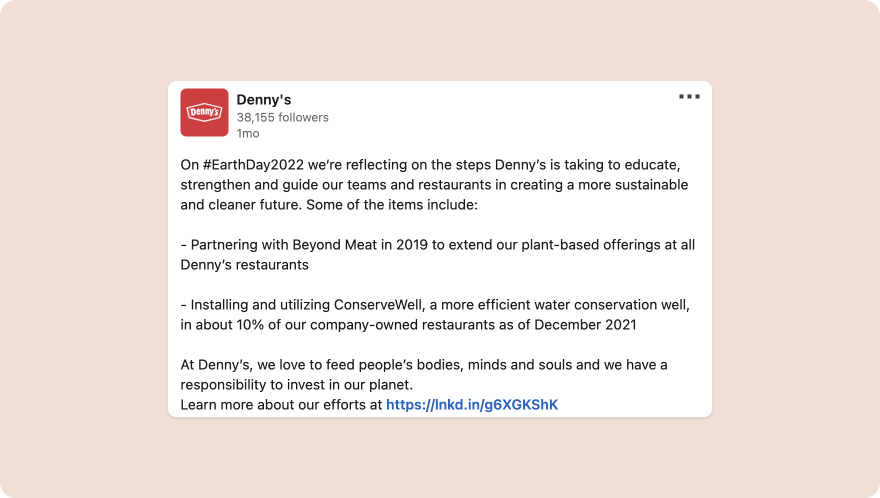 (Image Source: LinkedIn/Denny's)
(Image Source: LinkedIn/Denny's)So remember to adjust your tone across different social media platforms. You'll have to make slight variations depending on whether you're posting on Facebook, Twitter or any other app.
5 Tools to improve your social media engagement
Once upon a time, you would have had to hire all kinds of people for content creation, tracking analytics, scheduling posts and streamlining your workflow.
Now thanks to the magic of apps and online software, you can look after most of it yourself with the help of a few great tools. Check out a few of the best below:
1. Canva
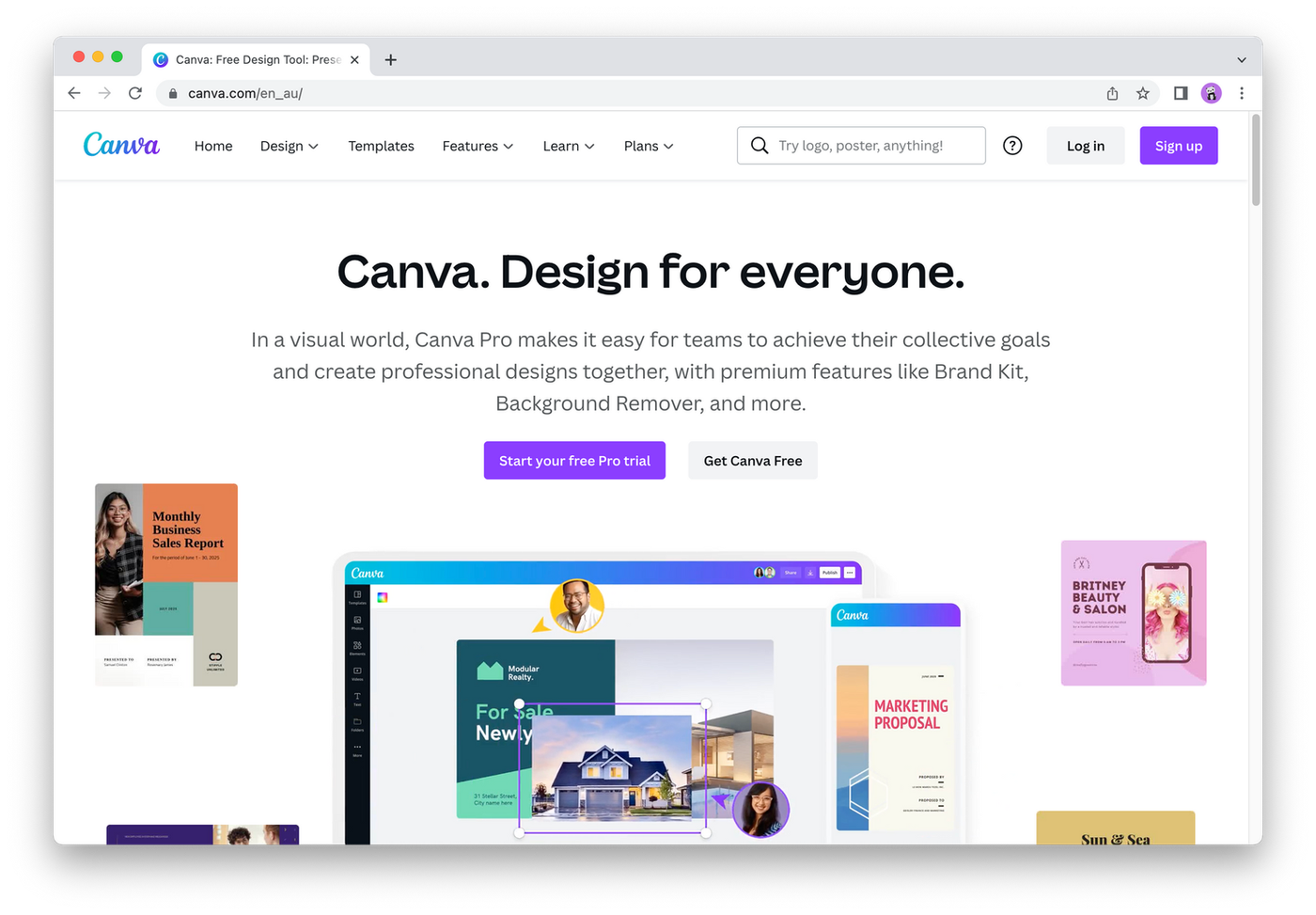 (Image Source: Canva)
(Image Source: Canva)Canva is a free graphic design tool that you can use to improve your posts. It has a huge library of free templates that you can use to do just about everything from building a logo to creating awesome social media posts.
You can do just about anything you set your mind to in Canva. It's a really powerful tool that empowers you to post awesome visual content without being a professional designer or photographer.
Here are a few ideas of how you can use it for social media:
- Instagram posts
- TikTok backgrounds
- Facebook page headers
- Instagram stories
- YouTube channel art
- Twitter posts
- Infographics
Just select a template—there’s about a trillion—and open it in Canva’s editor. You can upload images of your own or choose from thousands of pre-built ones. Add text and design elements or just use a pre-made one to save a bunch of time.
Canva’s one of the most popular pieces of software on the planet and once you use it, it’s easy to see why. It makes graphic design quick, simple and painless. And when you’re done with the design it’s a breeze to download and share on social media.
2. Hootsuite
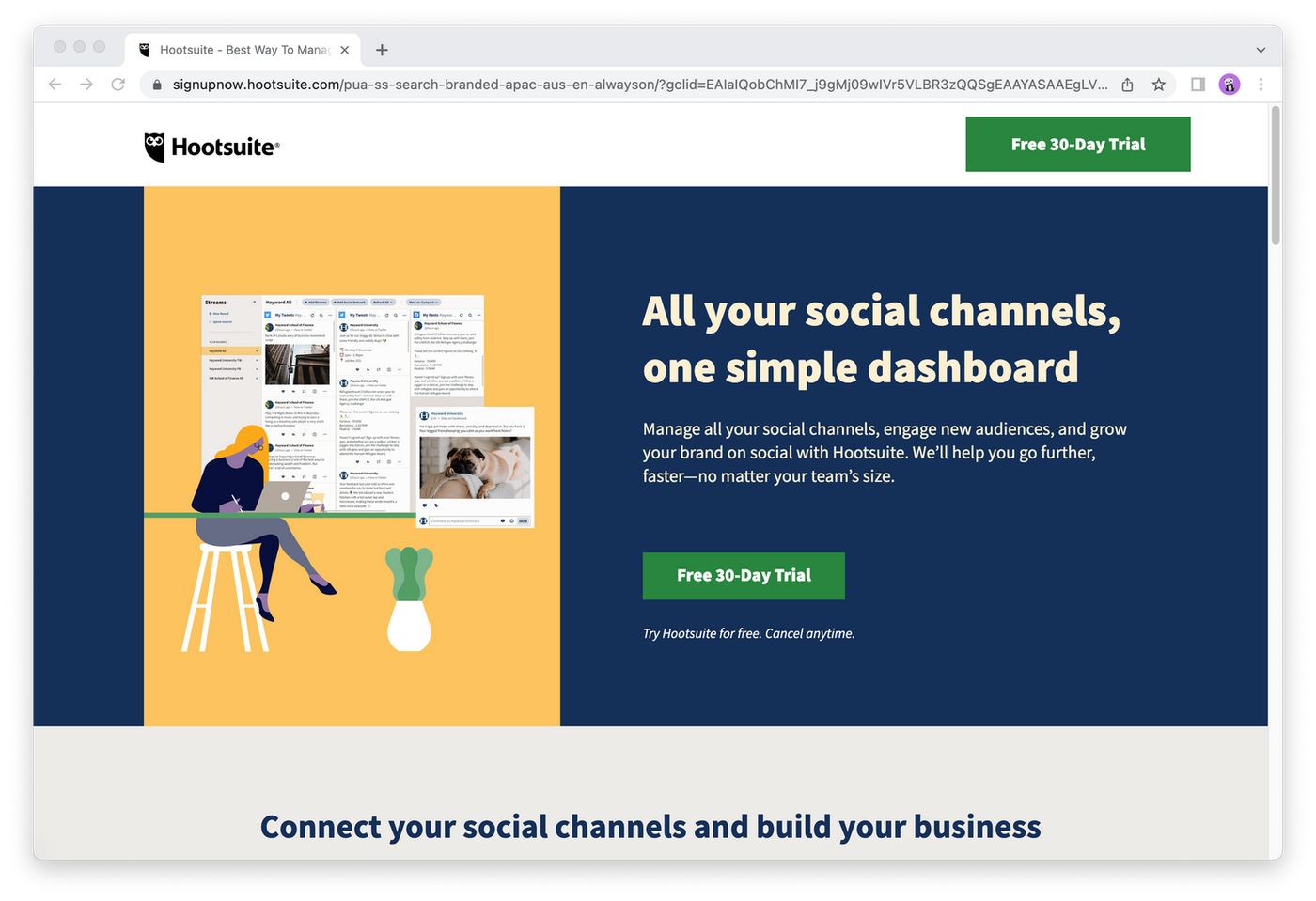 (Image Source: Hootsuite)
(Image Source: Hootsuite)We already covered how you can save time with social media scheduling tools, and as far as they go, it doesn’t really get better than Hootsuite.
Hootsuite simplifies the process of planning and scheduling your social media posts, making it way easier to post consistently and stick to your content calendar.
You can see your upcoming posts at a glance, move them around on a whim, and compose posts without having to leave the app.
Need to change plans? It’s easy to suspend all scheduled posts to get things back on track. You can even schedule multiple posts at once with the Bulk Composer, or use the Auto Scheduler feature to plug any gaps in your schedule.
In addition, Hootsuite offers complete social media management tools including the ability to respond to incoming messages, manage paid ads, and measure the results of any social campaigns you’re running.
3. Buffer
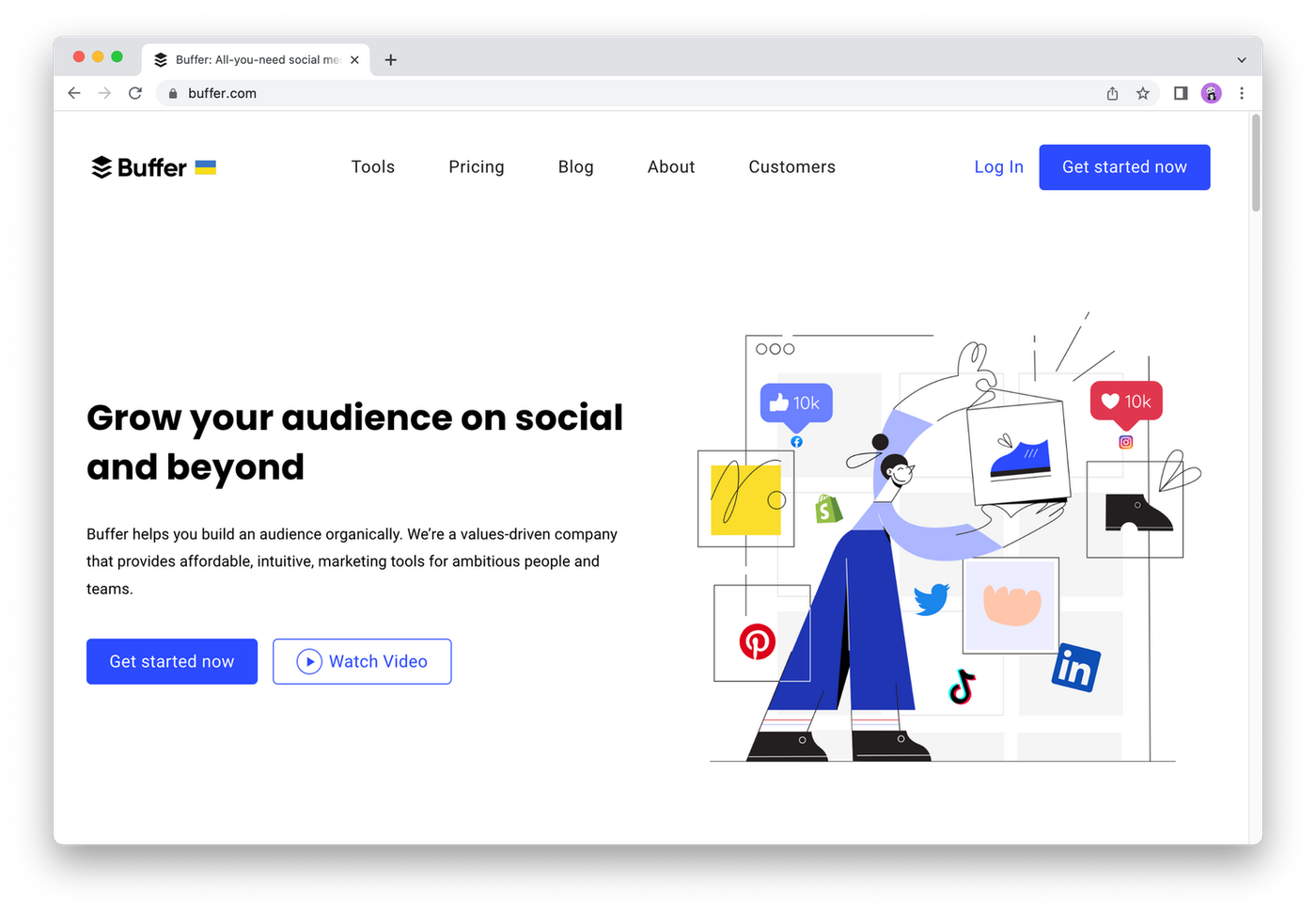 (Image Source: Buffer)
(Image Source: Buffer)Buffer’s simple social media tools are designed to bring you authentic engagement, and the analytics and reporting methods that it offers are the perfect way to track your engagement.
With Buffer’s social media analytics it’s easy to evaluate your marketing performance across Facebook, Twitter, and Instagram, all from a single unified dashboard. Plus, it has a super simple interface that’s easy to navigate, so you’ll have no trouble drawing useful insights.
Buffer Analyze is a particularly awesome feature. It finds the demographics of your audience so you can know exactly who you’re talking to. (You’re not going to talk to 30-year-old women the same way you would talk to 18-year-old men, for example).
Understanding who your social media users are empowers you to tailor your content directly to them, which will lead to enhanced engagement. It's a quick, simple type of market research. Buffer also allows you to build custom reports and export them, so you can share them across your company.
4. Wave.video
 (Image Source: Wave.video)
(Image Source: Wave.video)Video is the future. At least that’s what folks in the social media marketing biz tell us. Just look at TikTok and YouTube—two of the biggest social platforms on the planet run purely on video.
But video matters on other platforms too. Video views increased 62% on Twitter in 2020, and it’s a great way to add vibrancy to your posts. That means a good video editor is an essential part of any brand's kit.
That’s where Wave.video comes in. With Wave, you can use this AI video generator to make and repurpose videos for every channel. Upload your own clips and music, or find your ideal elements from Wave’s stock library of 300 million assets—then edit it together and share it to social media. Viola!
Wave also allows you to save and organize videos so you can reuse them down the road. It’s the perfect tool for agencies, letting you make as many videos as you need and easily categorize each one.
5. Facebook Creator Studio
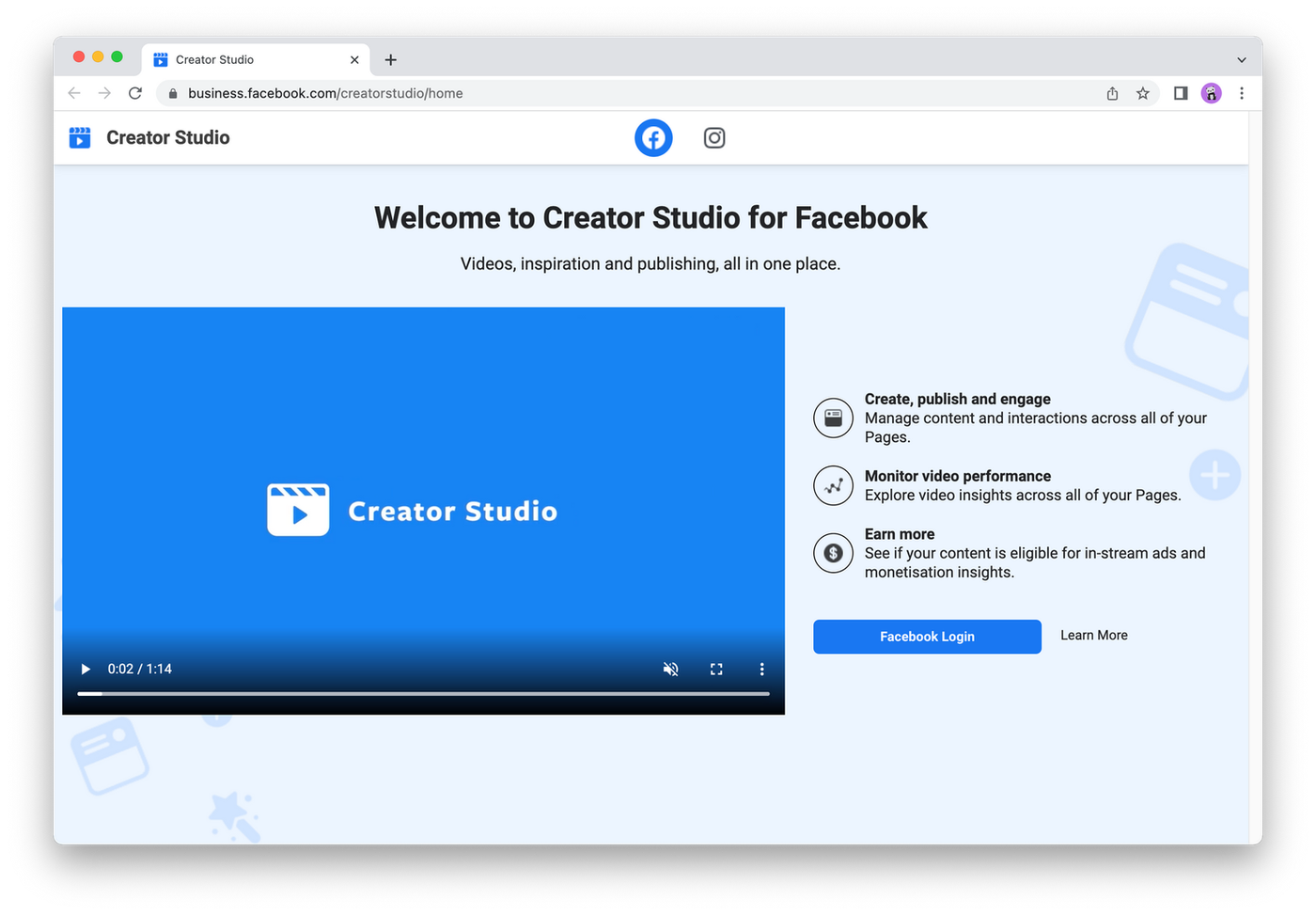 (Image Source: Facebook Creator Studio)
(Image Source: Facebook Creator Studio)Facebook Creator Studio is a great method of tracking engagement metrics on Facebook and Instagram. Comments, tags, messages and Likes all show up on the one dashboard so you can keep track of both platforms in the one place.
If your social strategy concentrates on Facebook and Instagram, Facebook Creator Studio is a great option.
Like Buffer and Hootsuite, you can use Creator Studio to schedule posts too (though only on the two platforms). Then you can delve deeper into the data and track the analytics, or respond to people slidin’ into your DMs from within the tool itself.
Over to you
Improving your social media engagement can lead to rapid-fire growth for your business. Even if you aren’t looking to build a huge following, it’s an important part of your brand’s identity and gives you a valuable way to engage with your company’s lifeblood— your customers.
It doesn’t have to be difficult. Post relevant content consistently, interact with your customers and build a social media presence that accurately reflects your brand. By doing this you’ll be heading in the right direction, and then all you’ve got to do is stick with it.
Remember to set measurable goals and commit to hitting them. It’s a long process, but with the proper tools and systems in place, you’ll reap the rewards in no time.
Rafaella Aguiar is Director of Marketing at Kicksta, an online platform powered by cutting edge Artificial Intelligence technology that helps you generate real organic growth on Instagram.
Deepak (Dee) Shukla, the dynamic founder of Pearl Lemon, built the leading SEO agency in London by l...
When Luiz Sifuentes lost the platform powering his entire web design business, he rebuilt smarter—wi...
Julie Winter, a broker licensed in 20 states with over 5,000 homes sold, uses Paperform to automate ...
All of our product updates and big company news for Paperform and Papersign from Oct 24 - May 25 to ...